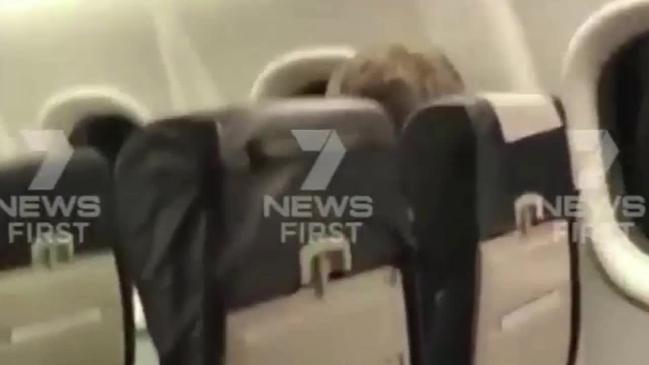Report finds Qantas profits result of failure to update ‘ageing’ aircraft fleet
YESTERDAY, Qantas announced record profits. But a new report warns the company could pay for its cost-cutting down the track.

Travel
Don't miss out on the headlines from Travel. Followed categories will be added to My News.
QANTAS has just announced a record $976 million profit — but a new report has revealed those stunning results might come at a price.
Recent findings of credit ratings agency S & P Global revealed the real reason behind the company’s stunning profit turnaround — after recording a first-half profit of $976 million underlying before tax — was at least partly because of Qantas’ failure to update its ageing fleet of aircraft.
According to S & P Global, the average age of the company’s aircraft has been steadily rising.
Even more alarming is the fact Qantas has ditched its 8-10 year target range.
And the report noted that while a reduced investment in aircraft brought a “temporary boost to financial performance”, it would almost certainly become problematic down the track.
Report authors went as far as comparing Qantas to Ansett — the Australian airline which went broke in 2001 partly because the company failed to update its aircraft.
•WHY QANTAS FLIGHTS ‘TRAUMATISED ME’
•WHAT IT’S REALLY LIKE TO FLY FIRST CLASS
•‘I QUIT MY $300K JOB FOR A FASHION START-UP’
“The collapse of Ansett Australia offers a reminder that sweating an airline’s aircraft fleet can prove devastating in the long-run,” the report said.
While there is no suggestion of any safety concerns with Qantas’ current fleet, author Graeme Ferguson told The New Daily the company could face future financial problems.
Mr Ferguson said delaying updates which would eventually become necessary was risky, because there may be other financial pressures such as high fuel prices when the fleet eventually needs urgent replacement.
“These aircraft have a useful life. The older they become, the less flexibility you have with the replacement cycle,” he said.
Mr Ferguson said Qantas’ dramatic change in fortune came down to increased productivity, lowered oil prices and the decision to reduce capital expenditure.
The report found Qantas’ investment in aircraft had “remained subdued” for years — and that
investment wasn’t expected to grow until at least the year ending June 30, 2020.
“Reduced aircraft investment, past writedowns, and past tax losses can provide a temporary boost to financial performance. We believe this is part of Qantas’ turnaround story alongside its successful transformation program,” the report said.
QANTAS PROFITS
Yesterday Qantas announced bumper half-year profits (before tax) of $976 million — the biggest half-year profit the company has ever seen.
The company also said it was unlikely to pay any company tax before 2019 due to losses brought forward from previous years.
As a result Qantas’ share price closed up almost six per cent.
The airline suffered serious losses in recent years with plummeting share prices, but the latest results indicate Qantas could soon deliver four consecutive years of profit.
Originally published as Report finds Qantas profits result of failure to update ‘ageing’ aircraft fleet


